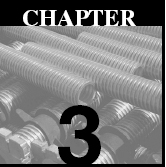
User File I/O
Building on the principles introduced in the last chapter, this chapter describes the major file-related programmatic interfaces (at a C level) including basic file access system calls, memory mapped files, asynchronous I/O, and sparse files.
To reinforce the material, examples are provided wherever possible. Such examples include simple implementations of various UNIX commands including cat, cp, and dd.
The previous chapter described many of the basic file concepts. This chapter goes one step further and describes the different interfaces that can be called to access files. Most of the APIs described here are at the system call level. Library calls typically map directly to system calls so are not addressed in any detail here.
The material presented here is important for understanding the overall implementation of filesystems in UNIX. By understanding the user-level interfaces that need to be supported, the implementation of filesystems within the kernel is easier to grasp.
Get UNIX Filesystems: Evolution, Design, and Implementation now with the O’Reilly learning platform.
O’Reilly members experience books, live events, courses curated by job role, and more from O’Reilly and nearly 200 top publishers.

